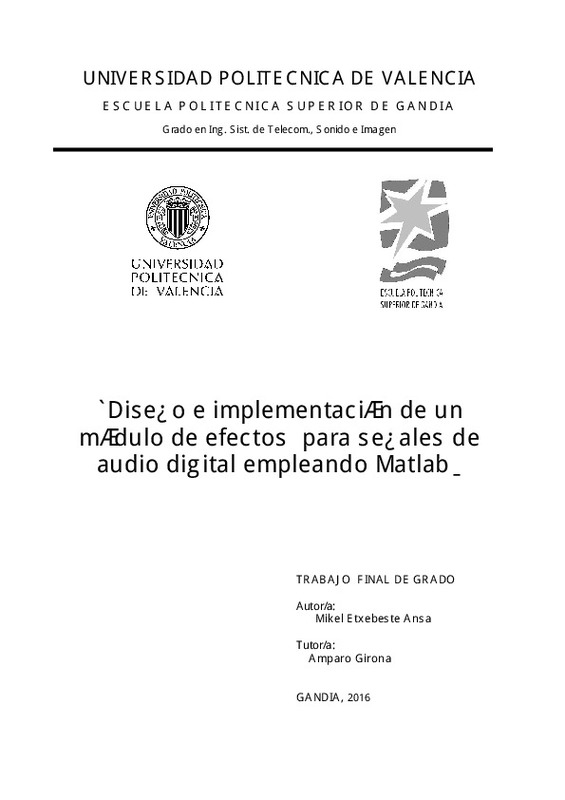JavaScript is disabled for your browser. Some features of this site may not work without it.
Buscar en RiuNet
Listar
Mi cuenta
Estadísticas
Ayuda RiuNet
Admin. UPV
Diseño e implementación de un módulo de efectos para señales de audio digital empleando Matlab
Mostrar el registro completo del ítem
Echeveste Ansa, M. (2016). Diseño e implementación de un módulo de efectos para señales de audio digital empleando Matlab. Universitat Politècnica de València. http://hdl.handle.net/10251/68753
Por favor, use este identificador para citar o enlazar este ítem: http://hdl.handle.net/10251/68753
Ficheros en el ítem
Metadatos del ítem
| Título: | Diseño e implementación de un módulo de efectos para señales de audio digital empleando Matlab | |||
| Autor: | ECHEVESTE ANSA, MIKEL | |||
| Director(es): | ||||
| Entidad UPV: |
|
|||
| Fecha acto/lectura: |
|
|||
| Resumen: |
En la industria musical o audiovisual es habitual aplicar distintos efectos a las se˜nales de audio.
Esto se puede hacer para adecuar la se˜nal al canal de transmisi´on o por razones puramente art´ısticas.
En este trabajo ...[+]
At the present time, It is habitual to use audio effects in audiovisual or music industry. This is
made to adecuate the signal to the transmission channel or for artistical reasons. In this work, the
most common ones ...[+]
|
|||
| Palabras clave: |
|
|||
| Derechos de uso: | Reconocimiento - No comercial - Compartir igual (by-nc-sa) | |||
| Editorial: |
|
|||
| Titulación: |
|
|||
| Tipo: |
|
recommendations
Este ítem aparece en la(s) siguiente(s) colección(ones)
-
EPSG - Trabajos académicos [5023]
Escuela Politécnica Superior de Gandia







